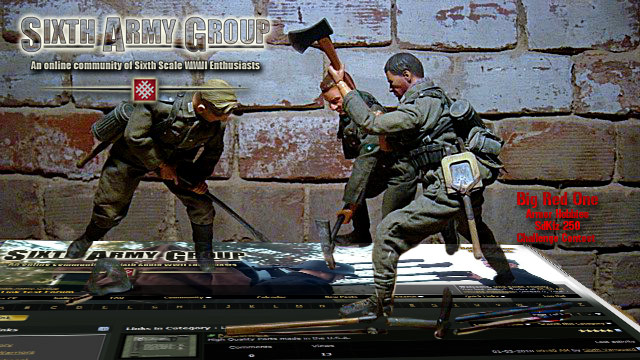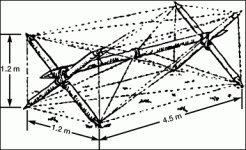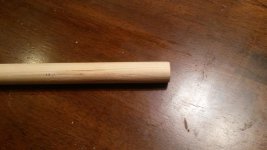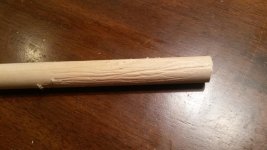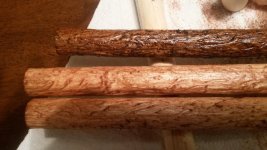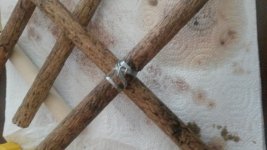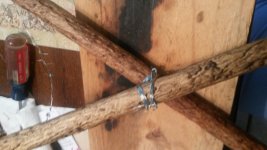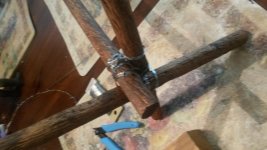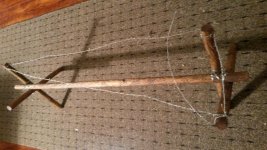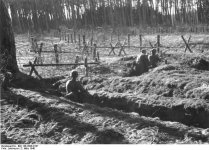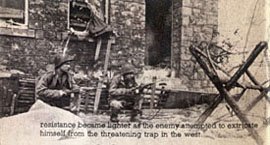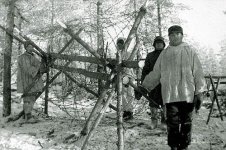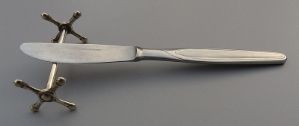Jhtrickey3
Tanker
Ever since I viewed the "Making 1/6 scale barbed wire" tutorial on this site:
http://www.sixtharmygroup.com/forums/showthread.php?t=10675 and the great method that Dudulle.69 used to create his wire I have wanted to create a wire obstacle. The "Knife edge" obstacle gave me a chance to do this. Many of you will recognize the obstacle, but perhaps not by this name.
The materials for this are quite simple and I found them all at local crafts stores (Hobby Lobby and Michaels). Hobby Lobby has a good source for the wooden dowels offering a good select in both 3/4" diameter and 5/8" diameters. For this project I went with a 3/4" diameter as this felt right.
Materials:
(4) 3/4" dowel rods 12" long. (these were cut down to 11" long)
(1) 3/4" dowel rod 36" long. (this was cute down to 30" long)
The above measurements were used to attempt to replicate the dimensions on the diagrams, but obviously you could replicate any length or height.
For the wire, I used 26 gauge wire. To create the barbs, the 26 gauge wire was wrapped around a piece of 18 gauge wire. In this matter, I tired to follow Dudulle.69's barbed wire making method.
The first step was to prep the wooden dowels to get them to resemble more finished poles that would be mass produced. A simple method that I used was to used a small round cutting bit in a dremel tool and "score" the length of the dowel to create a textured finish. After some time, you can get a good pole that has some decent texture and no longer resembles a store bought wooden dowel.
http://www.sixtharmygroup.com/forums/showthread.php?t=10675 and the great method that Dudulle.69 used to create his wire I have wanted to create a wire obstacle. The "Knife edge" obstacle gave me a chance to do this. Many of you will recognize the obstacle, but perhaps not by this name.
The materials for this are quite simple and I found them all at local crafts stores (Hobby Lobby and Michaels). Hobby Lobby has a good source for the wooden dowels offering a good select in both 3/4" diameter and 5/8" diameters. For this project I went with a 3/4" diameter as this felt right.
Materials:
(4) 3/4" dowel rods 12" long. (these were cut down to 11" long)
(1) 3/4" dowel rod 36" long. (this was cute down to 30" long)
The above measurements were used to attempt to replicate the dimensions on the diagrams, but obviously you could replicate any length or height.
For the wire, I used 26 gauge wire. To create the barbs, the 26 gauge wire was wrapped around a piece of 18 gauge wire. In this matter, I tired to follow Dudulle.69's barbed wire making method.
The first step was to prep the wooden dowels to get them to resemble more finished poles that would be mass produced. A simple method that I used was to used a small round cutting bit in a dremel tool and "score" the length of the dowel to create a textured finish. After some time, you can get a good pole that has some decent texture and no longer resembles a store bought wooden dowel.
